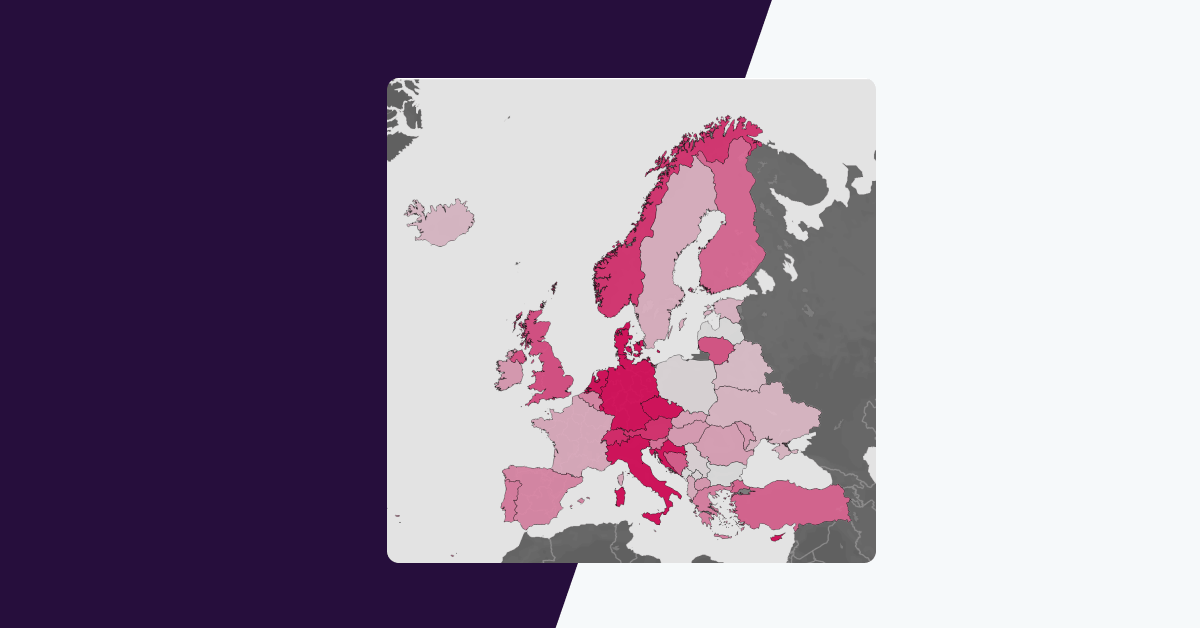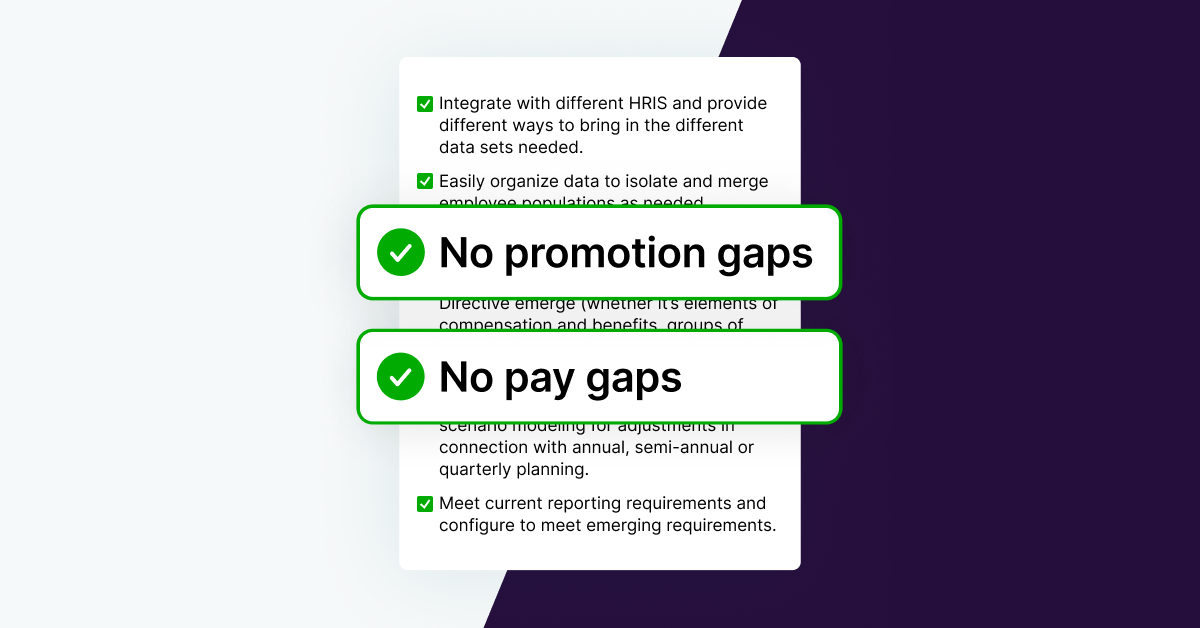The EU Pay Transparency Directive has triggered a seismic change in how organisations need to address workplace equity. The directive is about much more than equal pay for equal work, as it aims to close gender pay gaps with multiple mechanisms addressing different drivers of the pay gap. One of the primary drivers is the opportunity gap, detailing the relatively low representation of women in management and leadership roles.
Gender pay gaps exist in Europe, but how large are gender-based opportunity gaps in each country in Europe? To answer this question, we calculated how much more likely men were than women to occupy managerial positions using occupation and gender data from the International Labour Organisation. Data for most countries were from 2022, though for some countries (e.g. Ukraine) we had to go back to prior years.
Opportunity gaps in Europe
The map below shows where women are most under-represented in management positions in Europe. The opportunity gap is calculated by taking the ratio of men to women in management positions and dividing it by the ratio of men to women in all positions. So, for example, if there are twice as many men as women in management (men make up two thirds of managers), that would be proportional if men were two thirds of the workforce (an opportunity gap equal to 1), or an opportunity gap of 2.0 if women were half the workforce. In this case, women would be under-represented in management, and men would be twice as likely to be managers.
The largest opportunity gap in Europe is in Cyprus, where women are 48% of the total workforce but only 23% of managers. This makes men three times more likely than women to be managers. The next largest gaps are in Luxembourg (2.6) and Croatia (2.3).
In three European countries, women’s representation is higher in management than it is in the workforce overall — indicating an opportunity gap less than one. These countries are Latvia (where women are 56% of managers and 52% of the workforce, giving an opportunity gap of 0.85), Bulgaria (0.97) and Montenegro (0.98). Kosovo, Poland, and Serbia also have relatively small gender opportunity gaps.
Many European countries that ranked very well in the World Economic Forum (WEF) 2023 Global Gender Gap Report have large opportunity gaps. Iceland (ranked #1 in the WEF report) has a relatively small opportunity gap (women are 45% of managers and 48% of the workforce for an opportunity gap of 1.2) and Sweden (ranked #5) also has a small opportunity gap of 1.2, but Norway (ranked #2 in the WEF report) has an opportunity gap of 1.8, Finland (ranked #3) has an opportunity gap of 1.6, and Germany (ranked #6) has an opportunity gap of 2.1.
How the EU Directive addresses the opportunity gap
The EU Directive on Equal Pay and Transparency is at the forefront of an emerging trend of opportunity transparency legislation. One component of the EU Directive is a requirement for companies to disclose “the criteria that are used to determine workers’ pay, pay levels and pay progression.” Opportunity transparency ensures a more fair and accessible path to career advancement for all employees, regardless of their background, gender, ethnicity, or other factors.
The EU Directive also addresses opportunity gaps by requiring companies to report on their mean and median pay gaps (and triggering action to close large gaps). Pay gaps are heavily rooted in unbalanced representation in leadership positions and other higher-paying roles. By emphasising these unadjusted pay gaps, the EU Directive will spotlight underlying issues of inequitable career progression and mobility.
Close the opportunity gap at your organisation
Gender-based opportunity gaps exist at the country level in Europe because they exist at the organisation level. These gaps persist within organisations because of systemic and historic barriers to women’s advancement in the workplace — reflecting patterns of inequity in hiring and promotions.
Syndio’s software solution OppEQ® can help you dissect and understand the patterns behind these representation disparities at your organisation. By offering a comprehensive analysis of promotions, performance ratings, and more, OppEQ empowers you to pinpoint and address the root causes of inequality, so you can drive real change.
The information provided herein does not, and is not intended to, constitute legal advice. All information, content, and materials are provided for general informational purposes only. The links to third-party or government websites are offered for the convenience of the reader; Syndio is not responsible for the contents on linked pages.



